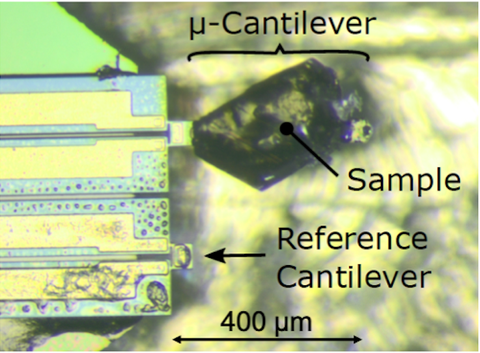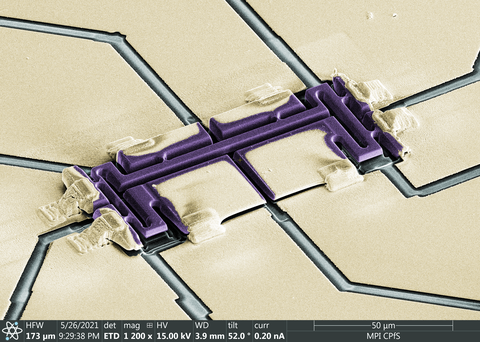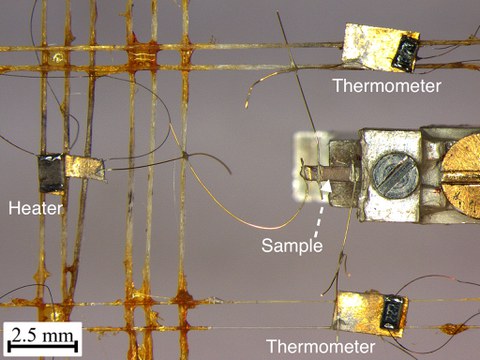Lab Equipment
Extreme sample environments
We put our samples into extreme sample conditions of very low temperature, high magnetic field, and high hydrostatic and uniaxial pressure. At the same time, we strive for the best possible resolution in our experiments with low noise levels. More...
High-sensitivity quantum-oscillation detection

Piezoresistive cantilever with sample.
When electrons in a metal are put into a strong magnetic field, they start an orbiting motion with quantized orbits. This leads to small oscillations in the density of states and hence in many measureable bulk properties with changing magnetic field. These oscillations are very hard to detect, since they are small and only occur in very clean samples and at very low temperature for systems with strong correlations. We have set up several high-sensitivity techniques to detect those oscillations. More...
Microstructuring of materials with focused ion beam for charge transport studies

Scanning electron microscope image of a FIB-microstructured sample for resistivity anisotropy measurements.
We use focused ion beam (FIB) microscopy and cleanroom techniques in order to tailor samples of investigated materials on a micron scale for high-precision measurements of charge transport properties. This approach allows greatly enhancing signal-to-noise ratio by optimising the aspect ratio of samples, enables accurately probing resistivity along specific crystallographic directions, and generally facilitates studies of novel compounds, which can only be synthesised as sub-millimetre-sized crystallites. More...
Thermal conductivity and thermoelectric properties down to 30 mK

Thermal conductivity setup for mK temperatures.
Conduction of heat in a material via heat currents is a phenomenon analogous to charge transport via electrical currents. Thermoelectric phenomena arise from the entanglement of thermal and electrical transport processes due to (1) heat transport by charge carriers and (2) scattering processes between charge carriers and other heat-carrying quasiparticles, e.g. phonons. By studying the thermal conductivity κ, the thermopower S and the Nernst coefficient N at low temperatures and magnetic fields, we gain valuable information on charge and heat carriers and low energy excitations. More...
